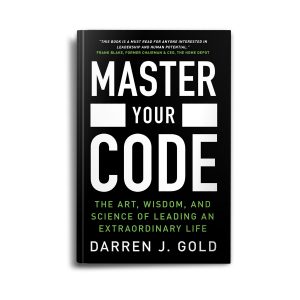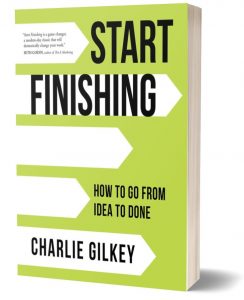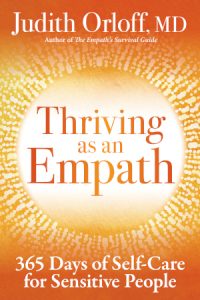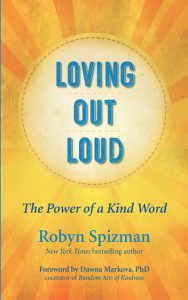Seven Simple Ways to Silence Snoring

If you snore, you might not even be aware that you’re making such a racket in your sleep – but if you sleep with a partner, they sure are! Where is all this noise coming from? It’s basically just noisy breathing that disturbs your sleep and that of your partner. The side effects of snoring include fragmented sleep, resulting in daytime drowsiness.
Snoring is a pretty common problem, affecting about 90 million adults in the United States. What causes it? The muscles of the throat relax when we sleep. The tongue falls back and the throat becomes narrow and soft. As we breath, the walls of the throat vibrate, and that’s when some people make that “snnnnnnooore” sound. Aging causes the throat muscles to relax, so older folks are more likely to snore than younger ones. Obesity also contributes to snoring since there is more fatty tissue in the neck area. Then there are also snoring risk factors to consider such the way the nose and throat are structured, how much alcohol you’ve had, and even your sleep position. And snoring could also be caused dry air, a cold, or an allergy.
If you are a chronic snoring offender, consult your physician to make sure you don’t have obstructive sleep apnea. Apnea is heavy snoring that requires medical attention when the throat’s walls collapse, causing a cessation of breathing.
Here are some simple home remedies that just might help to keep the peace in your household:
1) Use a humidifier. Air conditioners and heating units dry out indoor air, and the delicate tissue in the nose and throat are sensitive to this. A cool air humidifier helps to replace some of that moisture in the air, making it more comfortable and easier to breathe through the nose. You may add a few drops of essential oil to the humidifier unit to get added benefits. Peppermint, tea tree oil, and eucalyptus all help to open up the nasal passages naturally. If you’ve got a snoring dog, a humidifier will help that, too!
2) Take a steam. A hot steamy shower before bed helps to reduce nasal congestion so that you can breathe more easily. As an alternative, you can inhale steam by putting a bowl of boiled water on a table (add essential oil as an option here as well) and leaning over the bowl. Breathe in deeply. You may want to use a towel over your head to create a tent effect that directs the steam towards your face. Give it at least 5 to 10 minutes to see some results.
3) Lubricate the nasal passages. Ayurveda, India’s 5,000-year-old Science of Life, recommends lubricating the nasal passages with sesame oil, or ghee. Ghee is also known as clarified butter. It is used in many Ayurvedic remedies for its medicinal properties. With clean hands, you can simply use your pinky finger to massage the inside of your nostrils with sesame oil or soft ghee. Close off one nostril at a time and breathe in the oil to moisturize further up the nose. Repeat before bed and upon awakening in the morning.
4) Lubricate the throat.
-Olive oil is a strong anti-inflammatory agent and can decrease the swelling in the respiratory passages. It also relieves soreness and reduces the vibration in the throat that causes snoring. Simply take a shot class full of olive oil all by itself (two to three sips), right before you go to bed.
-Honey also has anti-inflammatory properties, and it coats the throat, reducing snoring vibrations. Mix one teaspoon of honey in a cup of hot water, or a cup of chamomile or ginger tea and drink sometime between after-dinner and bedtime. Chamomile is famous as a muscle and nerve relaxant, which will help you to sleep comfortably. Ginger has the benefit of anti-bacterial effects.
5) Use Herbals.
-Peppermint has anti-inflammatory properties that can help open up the whole respiratory system. Take a drop or two of peppermint oil in a glass of warm water and gargle with it before bed.
-Cardamom has been used as a decongestant and an expectorant, so it can be helpful in opening up blocked nasal passages. You can chew up some cardamom pods, or mix about ¼ teaspoon of ground cardamom in a cup of warm water and drink before bed.
-Nettle is helpful to relieve snoring caused by seasonal allergies as it has both anti-inflammatory and antihistamine properties. Make a tea from about a Tablespoon of dried nettle and let it seep in boiling water for five minutes. You can drink this anytime to help relieve allergy symptoms.
-Turmeric is a mighty antibiotic and antiseptic. Interestingly, these properties are amplified when turmeric is mixed with milk. This also makes it an amazing immune system booster! Use 2 teaspoons of ground turmeric and mix into a cup of hot milk to make “Golden Milk,” an ancient Ayurvedic recipe. Sip about half an hour before bedtime.
6) Sleep on your side. Sleeping on the back can cause the tongue to move to the back of the throat and blocking some airflow, causing snoring. If you can sleep on your side instead, air flows more easily so there’s much less chance of snoring. For those who have trouble sleeping on their side, “Tennis Ball Therapy” was created.
TBT, as it is now known in scientific journals, is a popular snoring treatment designed to help train a person to sleep on their side. Typically, a tennis ball is taped, or attached in some way, to the snorer’s back, impeding them from rolling over onto their back. It doesn’t have to be a tennis ball, but that size seems to work for most people. For my friend Dave, when the tennis ball was ineffective, his wife resorted to duct-taping a soccer ball to the back of his shirt! Snoring prevention has gotten to be big business. Now, conveniently, there are sleep shirts you can get with the tennis ball pocket sewed into the back. Some companies make dedicated inflatable sleeping backpacks to get the job done.
7) Play the Didgeridoo. The Didgeridoo is traditional wind instrument from Australia. It has a unique sound, and it requires strong mouth, tongue and throat muscles to play. Practicing on this instrument builds up and tones those muscles so that you are less likely to snore. Any wind instrument will do, just make sure that your practicing doesn’t become more annoying to your partner than your snoring is!
Lots more sleep tips at: BetterSleep.org










 Over the past two decades, there has been a quiet revolution in the fields of psychology and neuroscience challenging two fundamental assumptions. The first is that humans are hardwired to experience emotions and that emotions happen automatically. Unless you’re a saint, if you’ve been honked at by a rude driver, you will have seen this firsthand. You will have experienced reacting in a way that feels completely automatic (and likely regrettable). This is certainly what seems to be happening. The proximity between stimulus (the honk) and reaction (anger) is so close that your perception was that you had no choice but to react in a certain way. To make sense of this experience, you likely have attributed this phenomenon to the myth that humans are emotion- ally hardwired.
Over the past two decades, there has been a quiet revolution in the fields of psychology and neuroscience challenging two fundamental assumptions. The first is that humans are hardwired to experience emotions and that emotions happen automatically. Unless you’re a saint, if you’ve been honked at by a rude driver, you will have seen this firsthand. You will have experienced reacting in a way that feels completely automatic (and likely regrettable). This is certainly what seems to be happening. The proximity between stimulus (the honk) and reaction (anger) is so close that your perception was that you had no choice but to react in a certain way. To make sense of this experience, you likely have attributed this phenomenon to the myth that humans are emotion- ally hardwired. Darren Gold is a Managing Partner at The Trium Group, where he advises and coaches CEOs and leadership teams at many of the world’s most innovative companies, including Roche, Dropbox, Lululemon, Sephora, Cisco, eBay, Activision, and Warner Bros. He is the author of the new book
Darren Gold is a Managing Partner at The Trium Group, where he advises and coaches CEOs and leadership teams at many of the world’s most innovative companies, including Roche, Dropbox, Lululemon, Sephora, Cisco, eBay, Activision, and Warner Bros. He is the author of the new book  The following is a modified excerpt from Start Finishing: How to Go from Idea to Done.
The following is a modified excerpt from Start Finishing: How to Go from Idea to Done. Charlie Gilkey is an author, entrepreneur, philosopher, Army veteran, and renowned productivity expert. Founder of Productive Flourishing, Gilkey helps professional creatives, leaders, and changemakers take meaningful action on work that matters. His new book is
Charlie Gilkey is an author, entrepreneur, philosopher, Army veteran, and renowned productivity expert. Founder of Productive Flourishing, Gilkey helps professional creatives, leaders, and changemakers take meaningful action on work that matters. His new book is  **Excerpted from “Thriving as an Empath: 365 Days of Self-Care for Sensitive People” (Sounds True, Oct. 22, 2019)
**Excerpted from “Thriving as an Empath: 365 Days of Self-Care for Sensitive People” (Sounds True, Oct. 22, 2019) Judith Orloff, M.D., is a New York Times bestselling author, a member of the UCLA Psychiatric Clinical Faculty, and has a Facebook Empath Support Community with more than 6,000 members. She has been featured on The Today Show, CNN, and in Oprah Magazine, the New York Times and more. Her new book,
Judith Orloff, M.D., is a New York Times bestselling author, a member of the UCLA Psychiatric Clinical Faculty, and has a Facebook Empath Support Community with more than 6,000 members. She has been featured on The Today Show, CNN, and in Oprah Magazine, the New York Times and more. Her new book,  An excerpt from Loving Out Loud by Robyn Spizman
An excerpt from Loving Out Loud by Robyn Spizman Robyn Spizman is the author of
Robyn Spizman is the author of